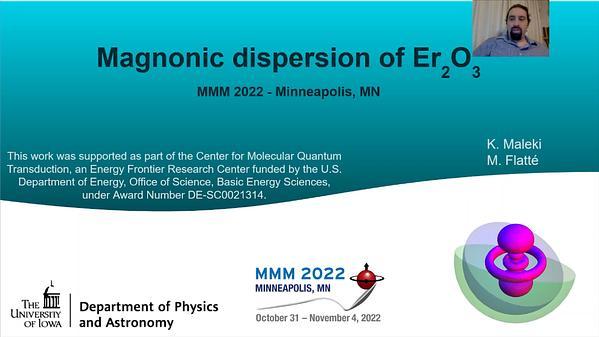Would you like to see your presentation here, made available to a global audience of researchers?
Add your own presentation or have us affordably record your next conference.
Sendust alloys (Fe73.7Al9.7Si16.6) 1 have high Δ1-band spin polarization and low magneto-crystalline anisotropy, and thus have great potential for use in the free layer of tunnel magnetoresistance (TMR) sensors 2. The purpose of this study is to control the composition and atomic ordering of FeAlSi films for achieving excellent soft magnetic properties, and to clarify the mechanism of soft magnetic properties.
The stacking structure was MgO subs./MgO (20 nm)/FeAlSi (30 nm)/MgO (1.5 nm)/Ta (1 nm). FeAlSi films with various compositions were deposited and annealed at Ta = 300-600 °C after deposition. The magnetic domain of the samples were measured by magneto-optical Kerr effect (MOKE) microscopy.
Figure 1 shows the experimental and simulated results for K1 at the film compositions where K1 ~ 0 was obtained. The results for the bulk are also shown. The simulated results, which use K1 of each ordered phase 3, 4 and degree of D03 order (SD03), show the same trend as the experimental results, with the K1 ~ 0 point shifting towards an Al-rich composition as the atomic order decreases. It was found that FeAlSi films with excellent soft magnetic properties can be obtained by controlling the volume ratio of D03-Fe3Al that is the unique phase with negative K1 in the ordered phases of FeAlSi films. Figure 2 shows the MOKE results for the Fe73.7Al9.7Si16.6 film annealed at Ta = 450 °C. The MOKE image shows a separation into easy axis-like areas (K1 < 0) and hard axis-like areas (K1 > 0). As a result of the phase separation, an overall K1 ~ 0 is realized. The separation into different K1 areas suggests that the composition and atomic ordering are not uniform in whole area of the FeAlSi films. This study indicates that the FeAlSi film is a promising material to significantly improve the performance of TMR sensors. This work was supported by JSPS Grants-in-Aid for Scientific Research, Tohoku University GP-Spin Program, NEDO Leading Research Project, Tohoku University CSIS, and Tohoku University CIES.
Fig. 1. Experimental (plotted points) and simulation (solid lines) results of K1 dependence on Al concentration.
Fig. 2 The comparison of MOKE and VSM results for the Fe73.7Al9.7Si16.6 film annealed at Ta = 450 °C.
References:
1 H. Masumoto, T. Yamamoto, J. Jpn. Inst. Met. Vol. 1, p. 127 (1937)
2 S. Akamatsu, M. Oogane et al., AIP Adv. Vol. 11, p. 045027 (2021)
3 M. Takahashi et al., J. Jpn. Inst. Met. Vol. 10, p. 221 (1986)
4 T. Kamimori et al., J. Magn. Magn. Mater. Vol. 54, p. 927 (1986)

Figure 1

Figure 2
